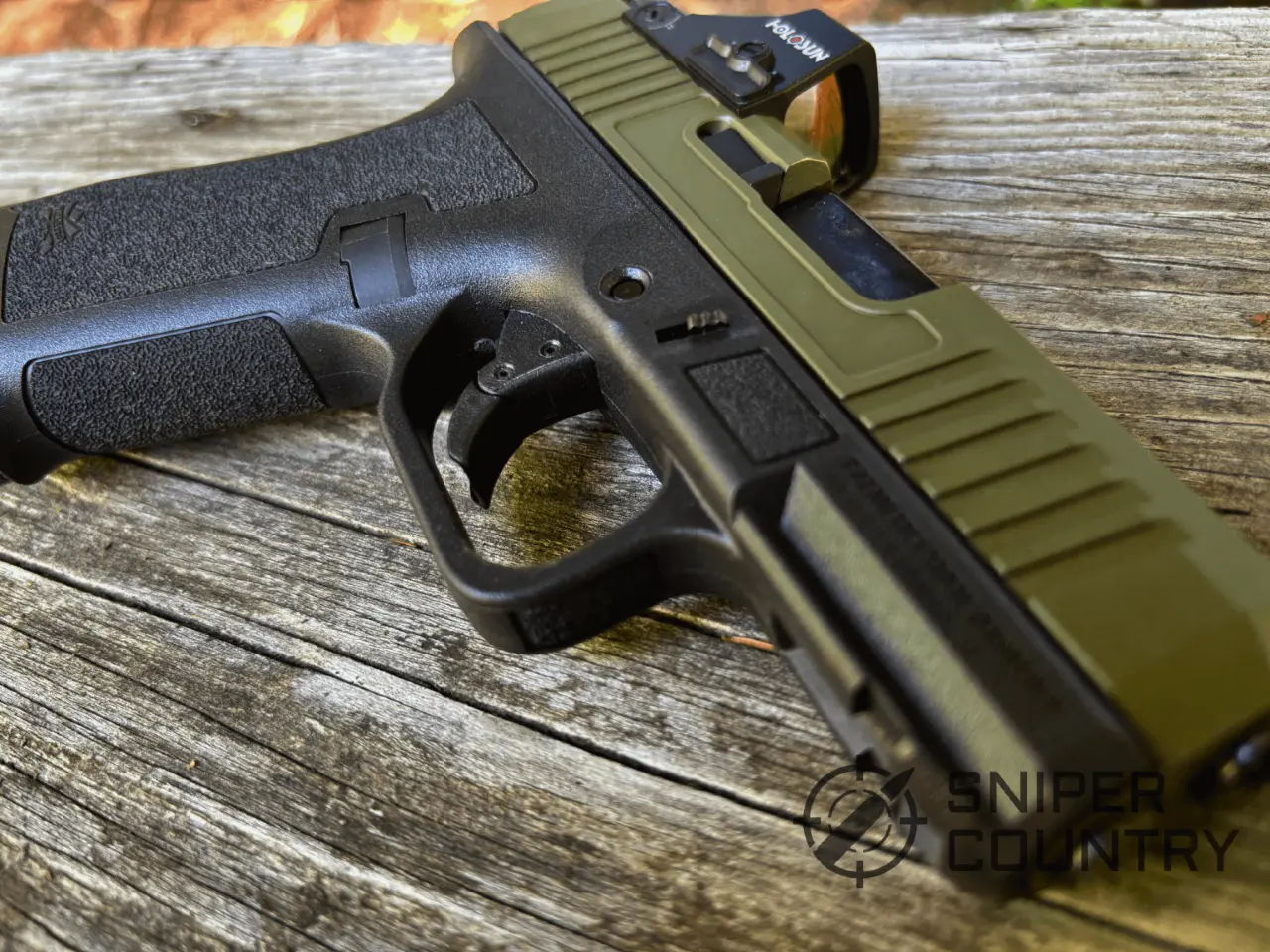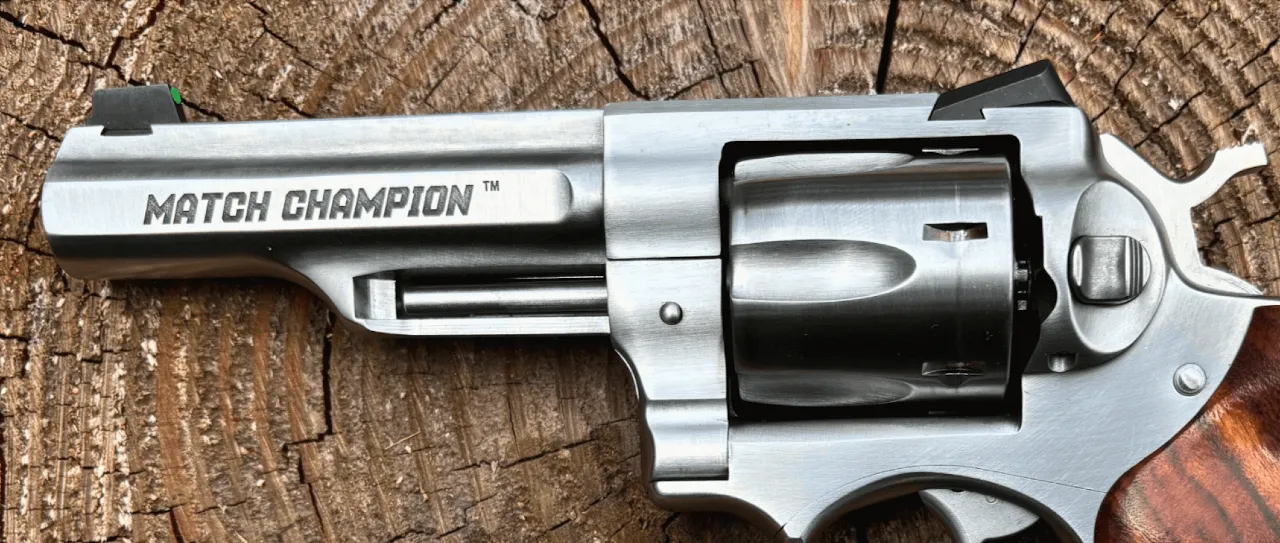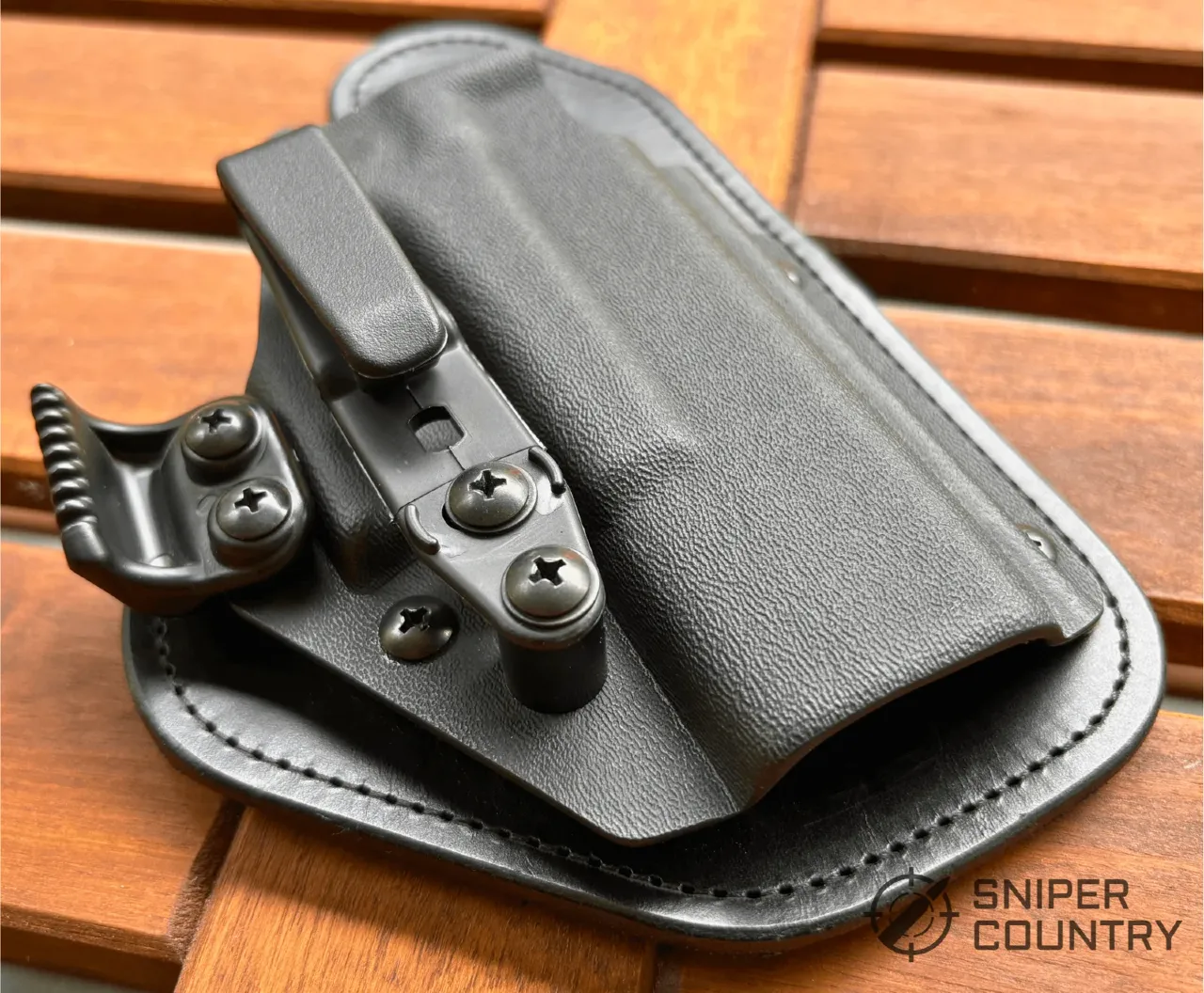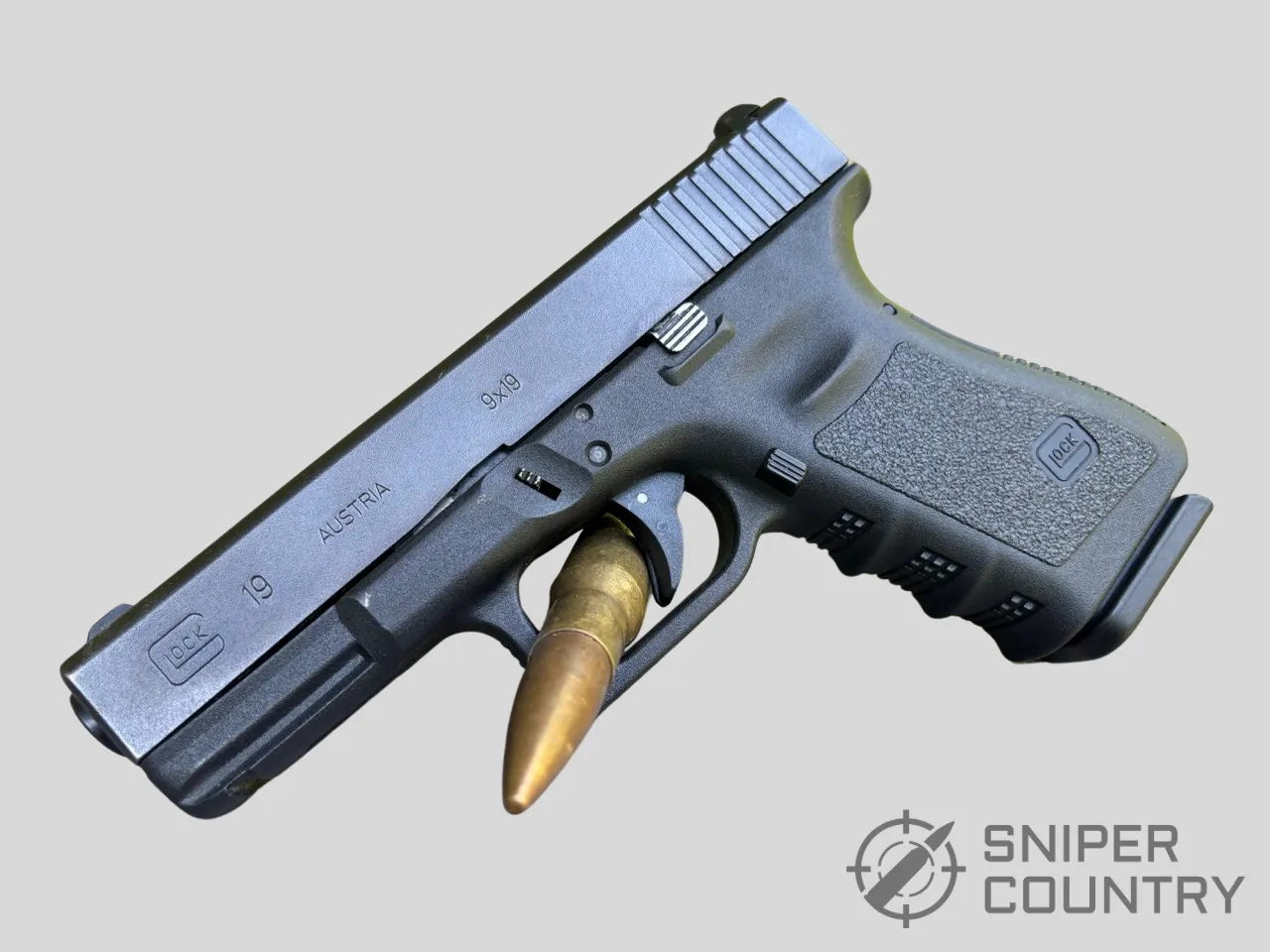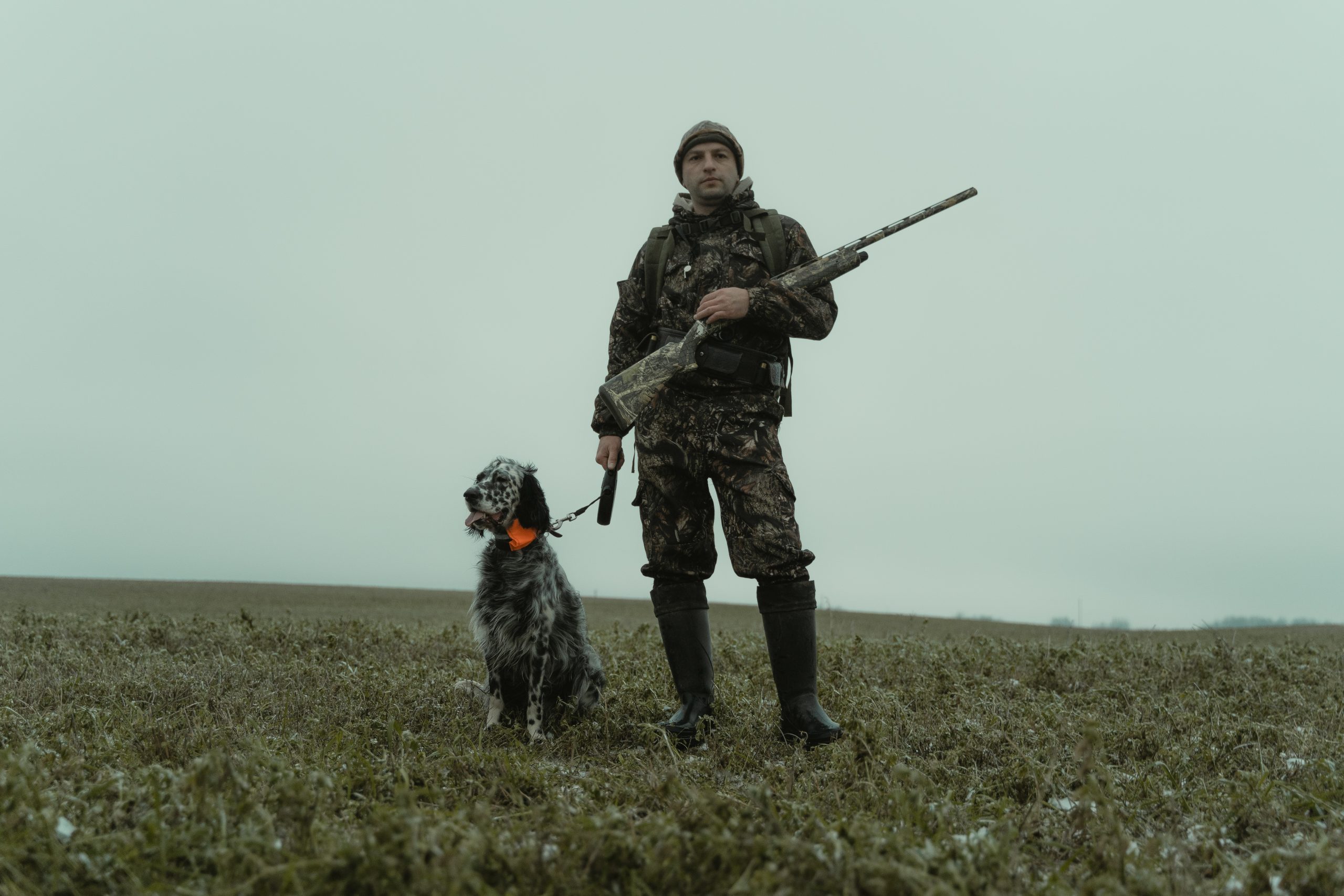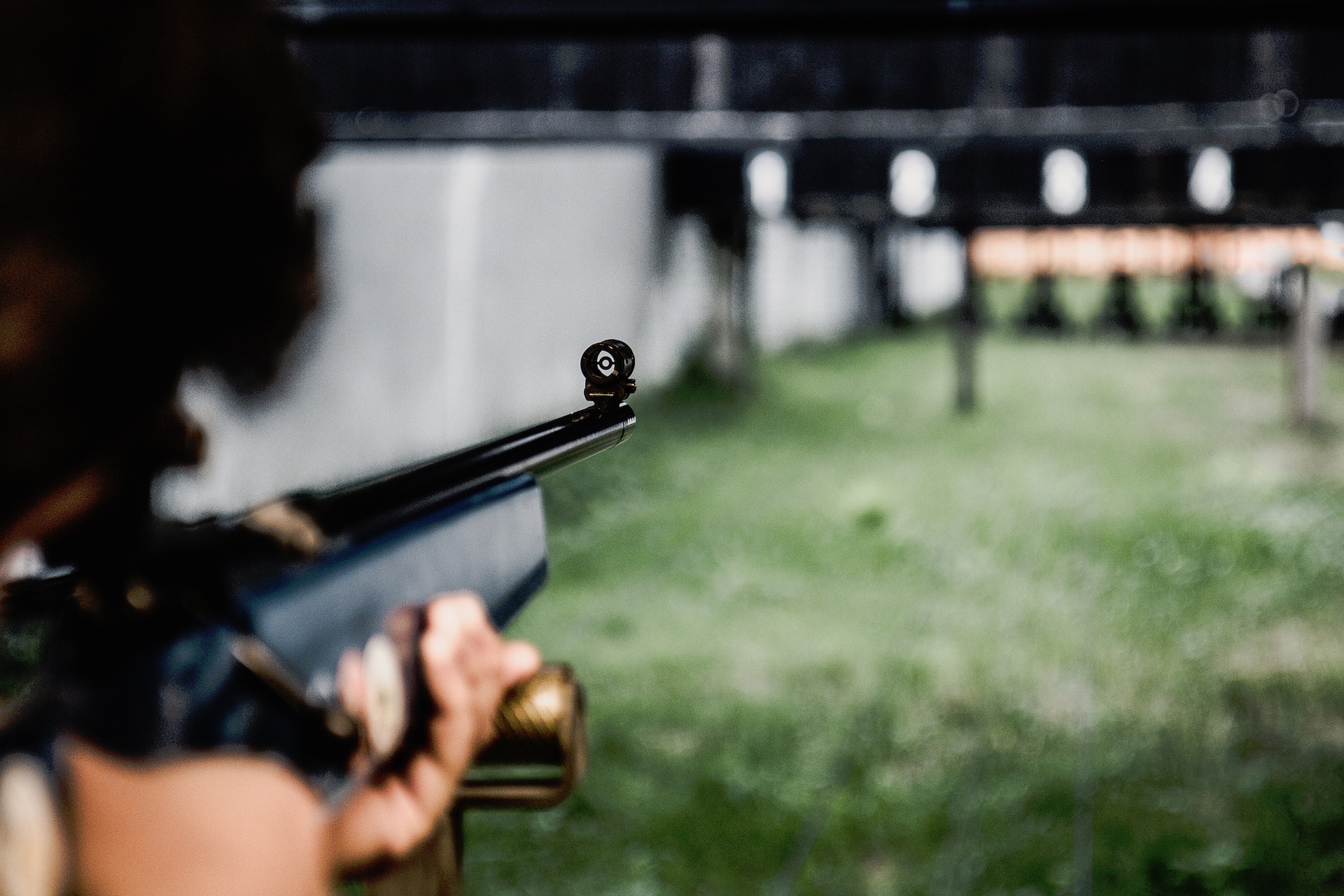What is the Difference Between Double Action and Single Action handguns?
Double-action handgun mechanisms perform two separate actions when the trigger is pulled. When pulling the trigger of a double-action pistol, the hammer is cocked and then released with a single trigger pull. No manual cocking of the hammer is required.
The sole purpose of a single-action handgun’s trigger is to release the hammer and fire a round.
How Does a Single-Action Semi-Auto Work?
With single-action (SA) semi-auto pistols, the trigger’s only function is to release the hammer to fire the shot. The hammer on single-action semi-autos is cocked by racking the slide while initially loading the pistol. The hammer on single-action semi-autos can also be manually cocked with your thumb, but this is a less common practice. I never do this with any of my single-action semi-autos. After firing the first shot, the slide of a single-action pistol moves backward during recoil to automatically re-cock the hammer for subsequent shots.
Semi-autos like 1911s feature a manual safety and are intended to be carried “cocked and locked.” This means that when carrying the pistol, the hammer is cocked, and the safety is engaged. The safety must be disengaged before firing.
Pros and Cons of Single-Action Semi-Auto Pistols
| Single-Action Pistol Benefits | Single-Action Pistol Drawbacks |
|---|---|
| Light, crisp trigger pull improves shooting accuracy and control | Carrying “cocked and locked” may feel unsafe to some users without proper training |
| Short trigger reset enables faster follow-up shots in defensive or competitive use | Requires thumb safety manipulation, which can be slower under stress |
| Consistent trigger pull from the first shot to the last—no double-action transition | Not as beginner-friendly as striker-fired pistols due to manual controls |
| Preferred platform for precision shooting and competition (e.g., 1911 models) | Greater risk of negligent discharge if mishandled when holstered or drawn |
| Clear tactile reset provides excellent trigger feedback and control | Extra training required to ensure muscle memory with safety operation |
| Iconic reliability and craftsmanship in classic single-action designs | Manual safeties can delay response time in high-stress scenarios |
Summary of Single-Action Semi-Autos
Not always ideal for defensive carry unless the user is thoroughly trained in handling manual safeties under stress.
Ideal for experienced shooters, especially those valuing accuracy and fast follow-up shots.
Examples of Single-Action Semi-Auto Pistols
1911

Browning Hi-Power
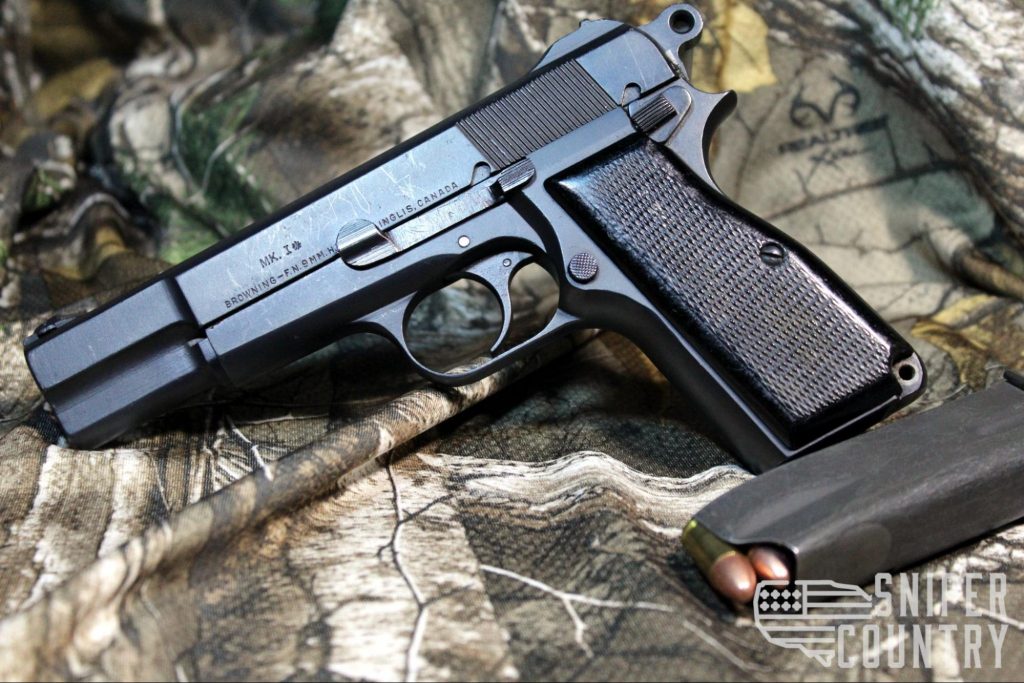
How Does a Single-Action Revolver Work?
Single-action revolvers require the hammer to be manually cocked with your thumb to fire every shot. This makes single-action revolvers slower to fire than more modern designs. The benefit is a light and crisp trigger pull. Single-action revolvers are generally very robust and reliable due to their simple design.
Pros and Cons of Single-Action Revolvers
| Single-Action Revolver Benefits | Single-Action Revolver Drawbacks |
|---|---|
| Extremely reliable mechanical design with minimal moving parts | Slow reload speed due to loading and ejecting one round at a time |
| Exceptionally durable — ideal for long-term field use or survival | Must manually cock the hammer for every shot, slowing rate of fire |
| Legendary accuracy due to light, crisp trigger break | Limited ammo capacity (typically 5–6 rounds) |
| Classic cowboy-style appeal and historical collectibility | Not optimal for defensive scenarios requiring rapid follow-ups |
| Often chambered in powerful calibers for hunting and outdoors | Requires more manual dexterity under stress |
| Ideal for target shooting, hunting, and historical enthusiasts | Lacks modern features like speedloaders or optics mounting (typically) |
Summary of Single-Action Revolvers
Iconic Styling, Timeless Feel: The classic Old West aesthetic combined with the satisfying mechanical feel of manual operation offers unmatched nostalgic and tactile appeal.
Reliability Over Speed: Single-action revolvers are renowned for their ultra-reliable, time-tested design — fewer moving parts means fewer malfunctions, making them excellent for survivalists, hunters, and backcountry carry.
Precision Shooters’ Favorite: Thanks to a crisp, consistent trigger and robust frames, single-action wheelguns deliver superb accuracy, especially when benchrested or used with iron sights.
Slower to Operate: Each shot requires manually cocking the hammer, and reloading is slow by modern standards, making them a poor fit for fast-paced defensive scenarios.
Ideal for Hunting & Heritage: Often chambered in powerful calibers (.44 Mag, .45 Colt, .357 Mag), these revolvers excel in hunting roles and appeal to collectors and cowboy action shooters alike.
Examples of Single-Action Revolvers
Colt Peacemaker 1873
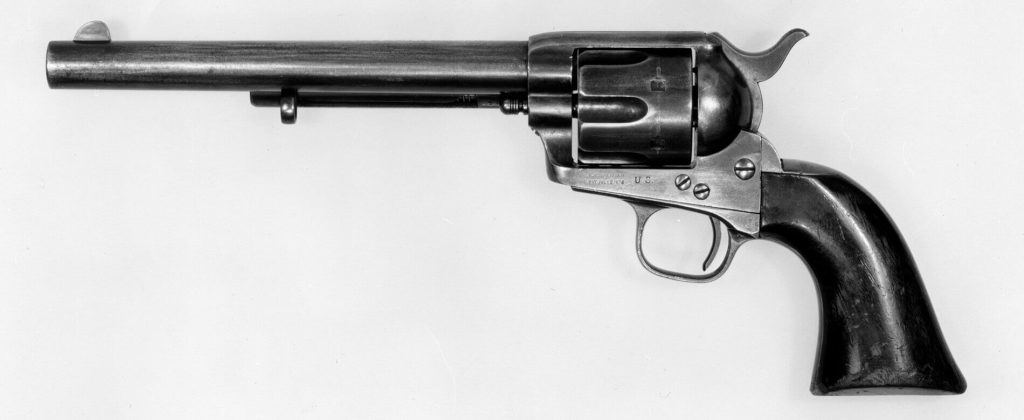
Ruger Super Blackhawk
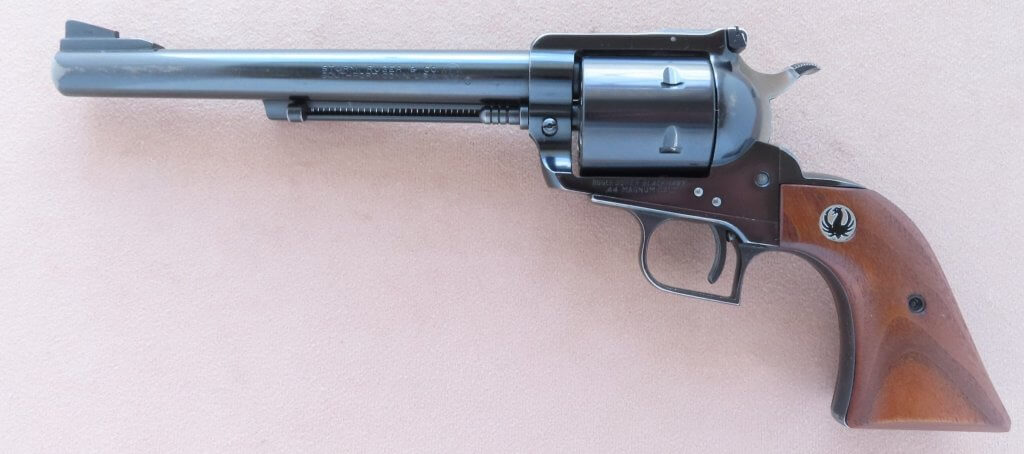
How Does a Double-Action Revolver Work?
The trigger on double-action (DA) revolvers both cocks and releases the hammer on each trigger pull. Double-action revolvers generally have a longer and heavier trigger pull than single-actions due to the trigger needing to perform multiple actions on each trigger pull.
Double-action revolvers can be manually cocked to shoot in single-action mode. This is beneficial for making precision shots because the single-action trigger is usually much lighter and crisper than the double-action pull.
Pros and Cons of Double-Action Revolvers
| Double-Action Revolver Benefits | Double-Action Revolver Drawbacks |
|---|---|
| Faster follow-up shots — trigger cocks and fires in one motion | Heavy trigger pull in double-action mode can affect accuracy |
| No need to manually cock the hammer for each shot | Trigger feel is generally less crisp than single-action designs |
| Versatile: can be fired in both double-action and single-action modes (DA/SA) | Heavier overall trigger weight may be difficult for weaker hands |
| More suitable for defensive use due to simplicity under stress | Some models can be bulkier than semi-auto pistols |
| Reliable operation, even when stored long-term without maintenance | Reloading speed still slower compared to semi-automatics |
| Often includes integrated safety via heavy initial trigger pull | Trigger pull consistency varies between DA and SA shots |
Summary of Double-Action Revolvers
Reliable, Low-Maintenance: Like their single-action cousins, DA revolvers remain a go-to choice for shooters seeking unmatched reliability without complicated safeties or magazines.
Speed + Simplicity: Double-action revolvers offer faster, no-fuss shooting by combining the cocking and firing process into a single trigger pull — a huge advantage in self-defense situations.
Dual-Mode Flexibility: Many DA revolvers also allow single-action shooting, offering versatility for both precision and reactive shooting needs.
Accuracy vs. Ease-of-Use Tradeoff: The heavier double-action trigger pull sacrifices some accuracy for immediate readiness — it’s a feature, not a flaw, especially for close-quarters use.
Examples of Double-Action Revolvers
Smith & Wesson 686

Colt Python
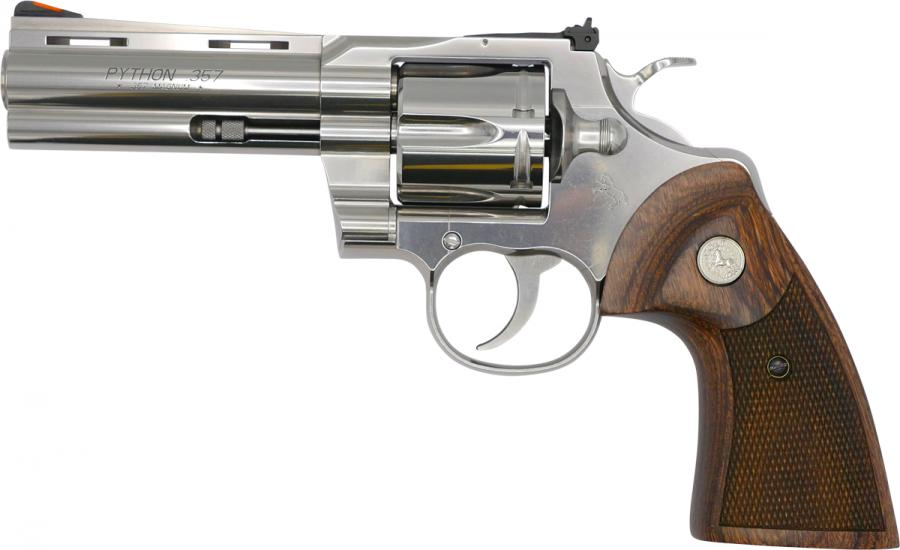
How Does a Double-Action/Single-Action Semi-Auto Pistol Work?
There are no pure double-action semi-autos on the market. Most semi-autos that feature a hammer are technically classified as double-action/single-action (DA/SA). This is because there is no need for a double-action-only semi-auto due to the benefits of a reciprocating slide.
On double-action/single-action semi-auto pistols, the first trigger pull is double-action. The first trigger pull cocks and releases the hammer to fire the shot. During recoil, the slide reciprocates and cocks the hammer. All subsequent shots feature a lighter single-action trigger pull.
Most DA/SA pistols feature a de-cocker and no manual safety. This allows the gun to be loaded and then safely decocked, enabling you to carry it in double-action mode.
There are some DA/SA pistols, such as the CZ75, that come with a manual safety. These are generally intended to be carried “cocked and locked” like a 1911. Attempting to decock a loaded CZ75 that lacks a de-cocker is dangerous and not recommended.
Pros and Cons of Double-Action/Single-Action Semi-Auto Pistols
| DA/SA Pistol Benefits | DA/SA Pistol Drawbacks |
|---|---|
| First trigger pull is long and heavy, acting as a built-in safety under stress | First shot trigger pull is heavier and longer than follow-up shots, requiring more training |
| Subsequent shots in single-action mode offer a light, crisp trigger pull for accuracy | Transitioning from DA to SA takes practice and can affect consistency |
| Manual decocker adds control and safety when lowering the hammer | More mechanical complexity compared to striker-fired or SA pistols |
| Favored by many military and law enforcement agencies worldwide | Trigger system can be intimidating or confusing for newer shooters |
| Offers a balance between safety and precision without relying solely on safeties | DA pull can negatively impact accuracy if not well-practiced |
| Well-suited for home defense and duty use where deliberate first shots are preferred | Manual controls (decocker, safety) can slow down response time without training |
Summary of DA/SA Pistols
Manual Safeties + Decockers: Some DA/SA pistols include both, which can be reassuring or cumbersome depending on the shooter’s comfort level and training.
Two Triggers, One Gun: DA/SA pistols provide a long, deliberate double-action first pull followed by short, light single-action follow-ups — a system designed for both safety and precision.
Training-Heavy, High-Reward: With proper training, shooters gain excellent control and fast follow-up shots. But the transition between pull weights demands consistent practice.
Trusted by Professionals: Models like the SIG P226, Beretta M9, and CZ 75 have seen decades of military, law enforcement, and competition use — proving the platform’s effectiveness.
Examples of Double-Action/Single-Action Pistols
Beretta M9
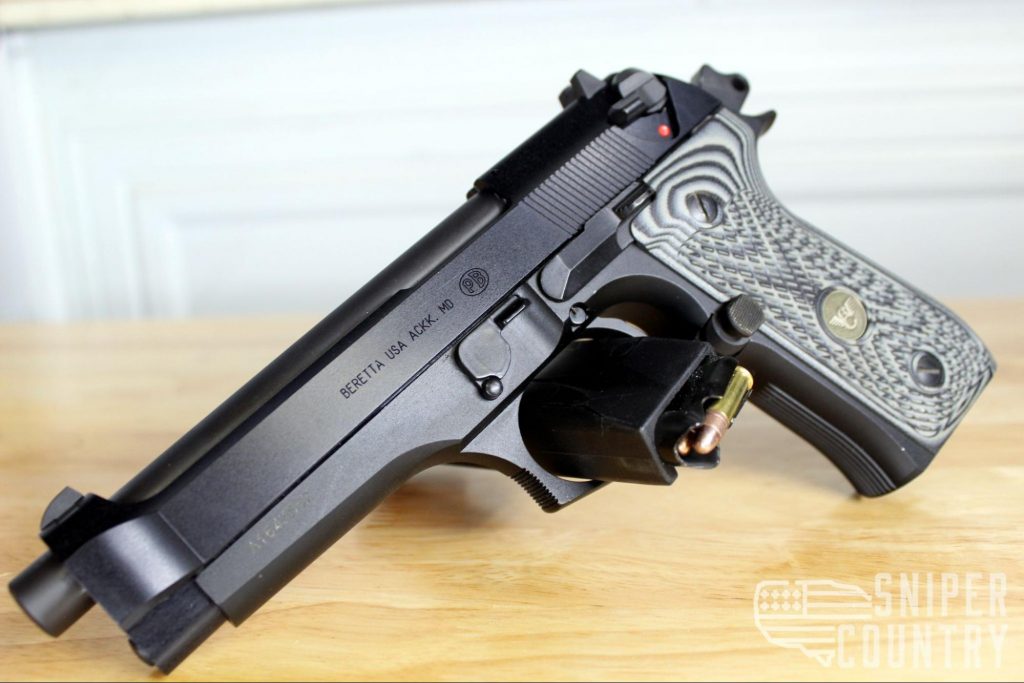
SIG P226
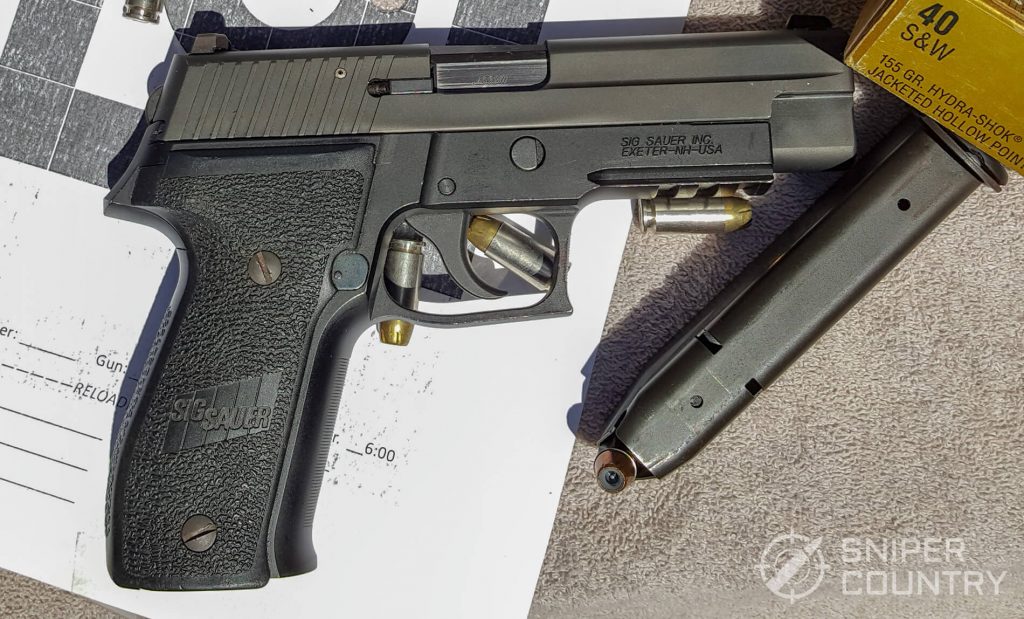
Striker Fired Pistols
Striker-fired pistols are a unique mechanism that incorporates some features and drawbacks of both double-action (DA) and single-action (SA) handguns. Check out our full article, all about striker-fired pistols, here.
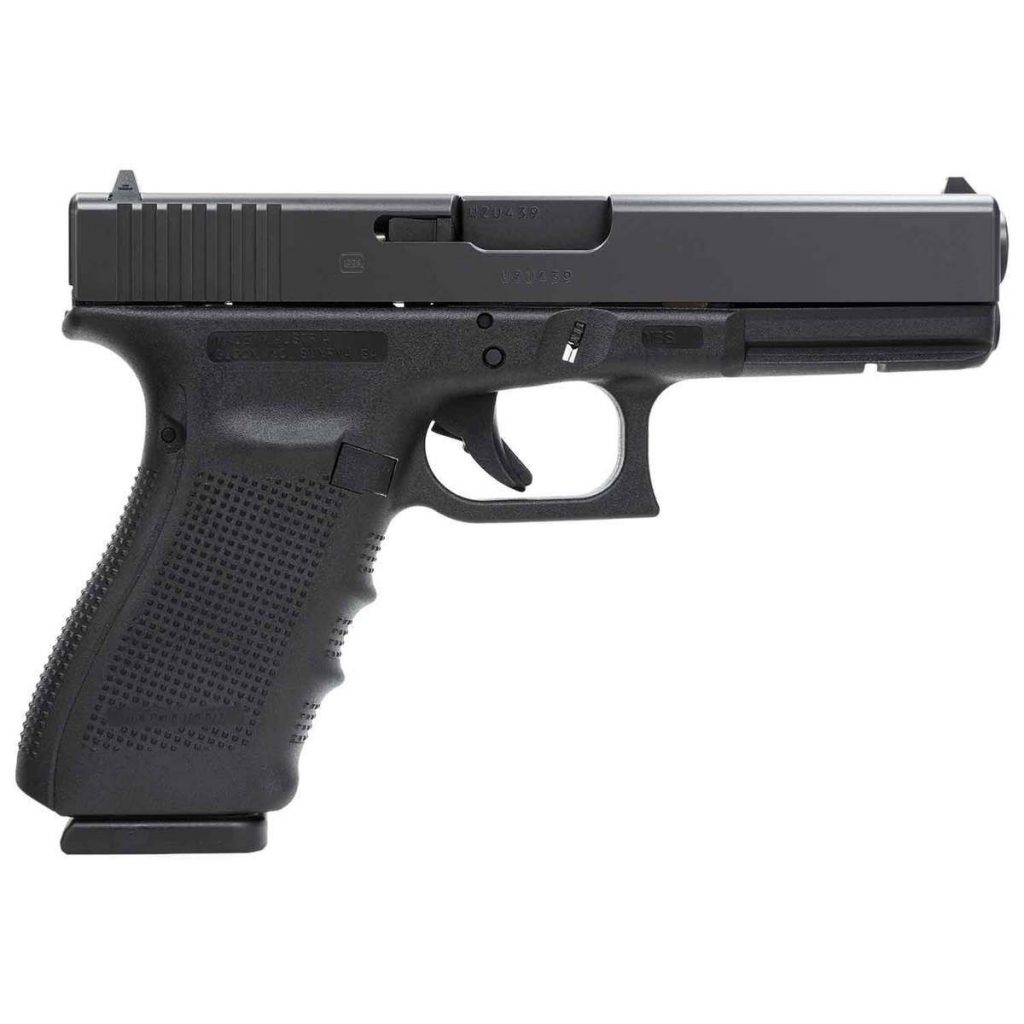
Conclusion
Both SA and DA pistols and revolvers have their benefits and drawbacks. The best choice depends on the intended purpose of the firearms and your personal preferences. It’s up to you to decide which style works best for you and your use case.
FAQ
Yes, single action semi-autos like 1911s and Browning Hi-Powers are excellent self-defense pistols. Single action revolvers are much slower to shoot and not as common for self-defense these days.
Glocks are striker fired pistols and classified as double action. They have their own SAFE ACTION® system, where pulling the trigger cocks the gun, disengages a firing pin safety and moves the striker rearward before spring pressure pushes it forward, all in one motion.
A striker-fired pistol is a type of gun that instead of using an external hammer, uses an internal “striker”. This “striker” is a spring-loaded firing pin housed internally.
Generally, DA is considered safer. This is due to double action triggers being heavier and less prone to accidental discharges. As with any firearm, safety should always be a top consideration.

